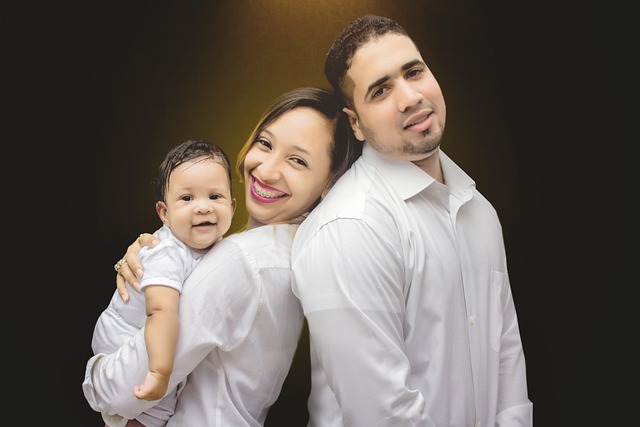Hispanic Heritage Month is a great time to celebrate the cultures of people from Latin America. Whether a person is Hispanic, Latino, or Latina depends on where they come from and their sense of identity.
The Census Bureau uses the term Hispanic to describe a person who has Mexican, Puerto Rican, Cuban, or Central or South American ancestry. However, more people are using the gender-neutral term Latinx.
There are more Hispanics in the U.S. than in Spain
Whether the term Hispanic or Latino is used, more people of this ethnic group in the United States than in Spain, as shown in the Hispanic ancestry DNA results. The reason may be that Hispanics are a broad group of people, whereas Spaniards can be more narrowly defined as those born in Spain or have Spanish ancestry.
Hispanics have a high rate of intermarriage with non-Hispanic whites and other races. This is especially true for second and higher generations, i.e., those born in the United States with at least one Hispanic parent. Offspring of these unions are less likely to identify strongly with a Hispanic subgroup or with the pan-ethnic Hispanic or Latino labels.
Research also suggests that Hispanics are engaged in the same trend as other groups toward declining familism, although the extent of this decline varies by national-origin group. Ethnic endogamy is lower for Mexican Americans than most other Hispanic groups in marriage, cohabitation, and childbearing.
Another difference is the proportion of Hispanics with a college degree. Venezuelan-origin Hispanics have the highest share, with about 55 percent having a bachelor’s degree or more, while those of Puerto Rican origin have the lowest percentage at just 24 percent. The overall share of Hispanics with a college education is still lower than other groups in the United States.
There are more Hispanics in the U.S. than in China
During the past decade, Hispanics accounted for more of the population increase in the United States than any other group. They also died at lower rates than White people — despite many facing socioeconomic challenges that would typically portend worse health outcomes. Researchers call this the Hispanic epidemiological paradox.
The term Hispanic covers various genetic, cultural, and linguistic identities. It’s not unusual to see a person of Hispanic descent with more than one heritage. This is mainly due to the complex nature of Hispanic origins, which span many countries and cultures and were shaped by numerous historical events.
Regarding family size, Hispanics are likelier to have larger families than the U.S. population. This is true for all types of Hispanics but is particularly pronounced among Puerto Ricans. The average family size of a Hispanic of Puerto Rican descent is 4.8 individuals, compared to the national average of 3.2.
The Nettie Lee Benson Collection at the University of Texas at Austin has a vast collection of materials on Latin America. It houses 970,000 books, journals, pamphlets, microforms, and 4,000 linear feet of manuscripts. The group is a valuable resource for students, scholars, and genealogists studying Hispanic history. The archives even include manuscripts on the infamous Mexican witch trials and a first-person account of an expedition through the treacherous Amazon jungle.
There are more Hispanics in the U.S. than in Japan
Hispanics have experienced rapid population growth in recent years. This growth has been driven by immigration and fertility but also results from changing family formation patterns. Hispanics have exhibited a strong trend toward cohabitation and nonmarital childbearing, and their intermarriage rates are higher than those of other groups. Ethnic mixing in Hispanic communities is a significant factor that needs to be considered when making population projections.
The pattern of intermarriage varies among Hispanic-origin groups and across generations. Generally, first-generation Hispanics have lower levels of ethnic endogamy in marriage and cohabiting unions than second or third (or higher) generation Hispanics. In addition, births to Hispanic women outside of marriage are more likely to involve a non-Hispanic white father than to married Hispanic mothers.
Hispanics have a younger median age than the nation as a whole. They are also more likely to have a college degree than other Americans. The share of Hispanics with a bachelor’s degree or higher has increased significantly since 2010. The 15 largest Hispanic origin groups vary by educational attainment, including Venezuelan-origin Hispanics, who have the highest share with a college degree, while Guatemalan-origin Hispanics have the lowest percentage.
There are more Hispanics in the U.S. than in India
Although “Hispanic” is typically used to refer to people whose ancestry comes from Mexico, most Hispanics in the United States are of Puerto Rican, Cuban, or another Latin American origin. Our studies of Hispanic identity have found that many Hispanics take a broad view of what it means to be Hispanic: They are willing to consider themselves Hispanic even if they do not speak Spanish, have only one parent with Hispanic ancestry, or have a Spanish last name.
Hispanics have shared the general trend toward cohabitation and nonmarital childbearing in the United States. Still, they are also distinguishable from other racial groups by their strong attachment to familism, the belief that the family is central to the well-being of individuals. In our surveys, nearly all Hispanics born in the United States say that familism is integral to their identity and values.
More Hispanics than ever identify with more than one race on the census, a reflection of both changes to the Census Bureau’s wording of the race question and growing racial diversity among Hispanics. Nine in ten Hispanics who identified with more than one race in 2020 said they were Some Other Race and either White or Black, the highest share of any racial group. Explore the Center’s detailed fact sheets on Hispanics and the 15 largest Hispanic-origin groups.









